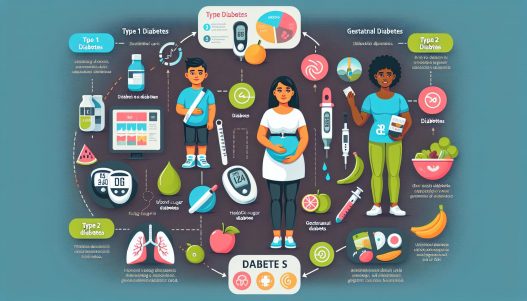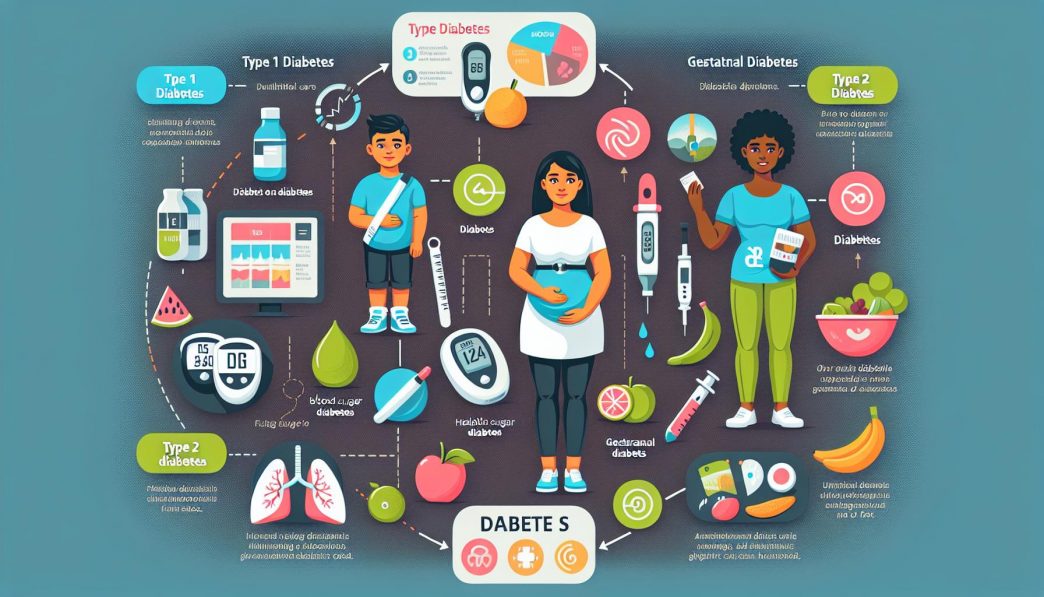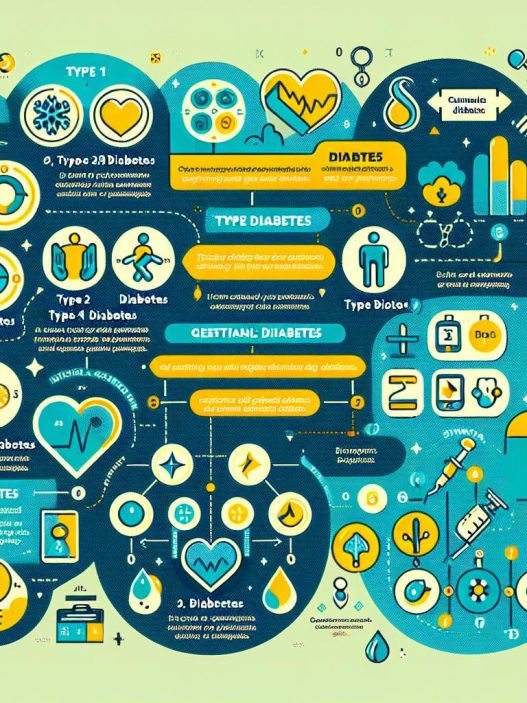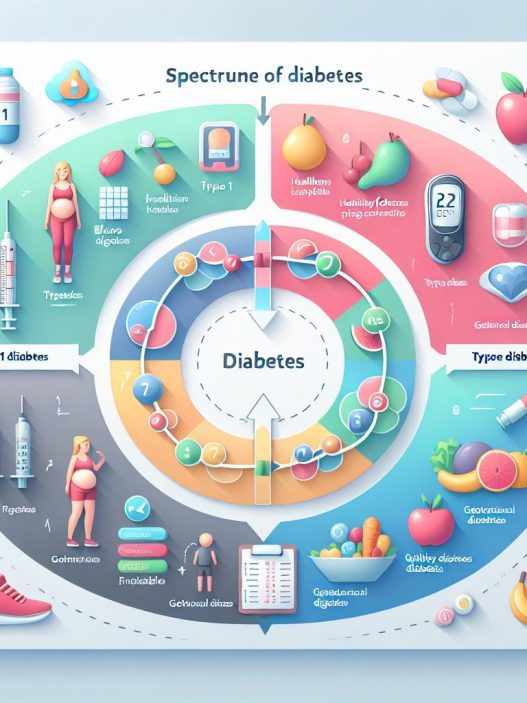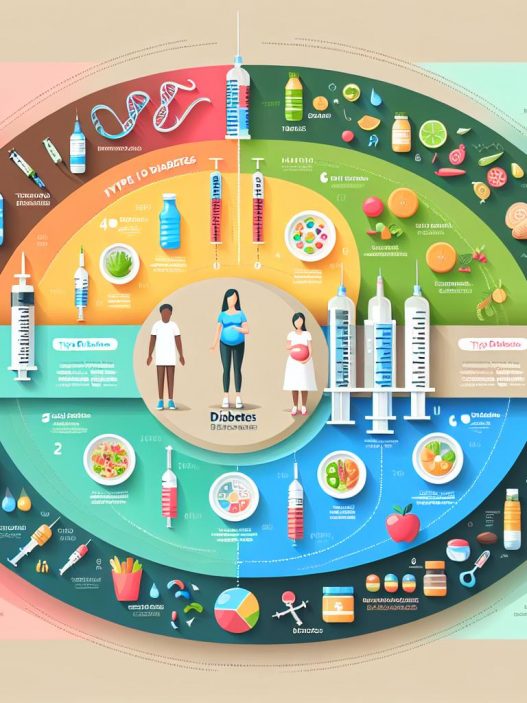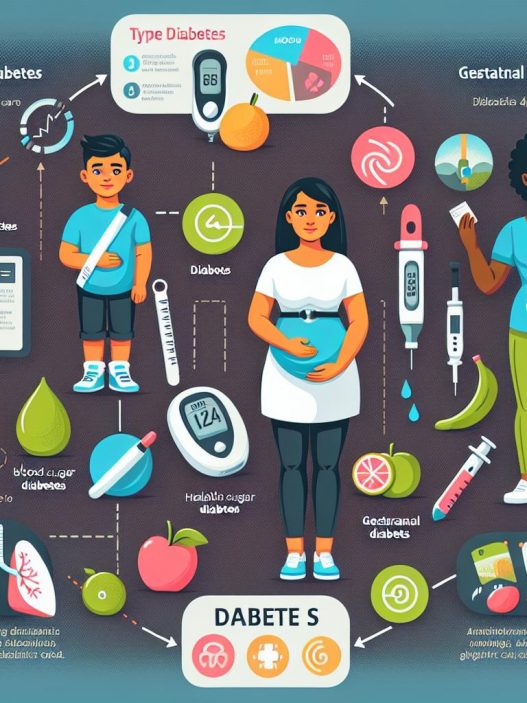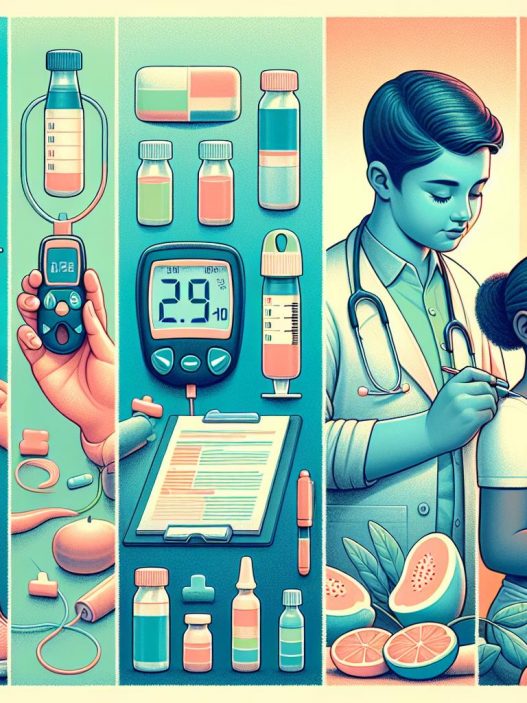# Understanding the Spectrum of Diabetes: From Type 1 to Gestational and Beyond
Diabetes is a multifaceted disease affecting millions worldwide, with various types affecting individuals differently. It’s crucial to understand the different forms of diabetes, from Type 1 to Gestational diabetes, and how they impact overall health, management, and treatment. This comprehensive guide aims to provide insights into the spectrum of diabetes, illuminating the differences, similarities, and implications of each type, empowering you to make informed decisions about your health.
Understanding Type 1 Diabetes: An Autoimmune Condition
Type 1 diabetes (T1D) is an autoimmune disease where the immune system mistakenly attacks the insulin-producing beta cells in the pancreas. This condition typically manifests in childhood or adolescence, although it can occur at any age. Symptoms often arise rapidly and can include excessive thirst, frequent urination, weight loss, and fatigue. Unlike Type 2 diabetes, individuals with T1D must rely on external insulin delivery methods, such as injections or insulin pumps, for life-long management.
Living with Type 1 diabetes necessitates a deep understanding of blood sugar management and how various factors such as diet, exercise, and stress affect insulin requirements. Patients must engage in continuous glucose monitoring to avoid the risks of hyperglycemia (high blood sugar) and hypoglycemia (low blood sugar), which can pose immediate threats to health. Educating oneself on carbohydrate counting, understanding insulin action times, and recognizing symptoms of both high and low blood sugar is fundamental for effective management.
Recent advances in technology, including continuous glucose monitors (CGMs) and automated insulin delivery systems, have substantially improved the quality of life for many T1D patients. These innovations allow for more precise blood sugar control, thereby minimizing complications in the long term. Nonetheless, the psychological burdens of living with a chronic illness like T1D can take a toll, emphasizing the importance of support systems and mental health resources for individuals and their families.
Exploring Type 2 Diabetes: Lifestyle Factors and Management
Type 2 diabetes (T2D) represents the most common form of diabetes, accounting for approximately 90-95% of cases. It usually develops in adulthood but increasingly affects younger populations due to rising obesity rates and sedentary lifestyles. T2D occurs when the body becomes resistant to insulin or when the pancreas cannot produce enough insulin to maintain normal glucose levels. Risk factors include obesity, physical inactivity, family history, and certain ethnic backgrounds.
Unlike Type 1 diabetes, T2D can often be managed through lifestyle modifications. Implementing a balanced diet rich in whole grains, fruits, vegetables, and lean proteins, combined with regular physical activity, can help stabilize blood sugar levels and improve insulin sensitivity. For some individuals, this may even lead to remission of the disease, showcasing the power of lifestyle changes in diabetes management.
Pharmacological interventions may be necessary for those who cannot achieve adequate control of blood glucose through lifestyle adjustments alone. Various medications, such as metformin, sulfonylureas, and SGLT2 inhibitors, are available to help manage Type 2 diabetes effectively. Additionally, recent research has highlighted the benefits of bariatric surgery for severely obese individuals, offering a potential pathway to reversing T2D.
Gestational Diabetes: Implications for Mothers and Babies
Gestational diabetes occurs during pregnancy when a woman’s body cannot produce enough insulin to meet increased demands, resulting in elevated blood sugar levels. This condition typically resolves after childbirth, but it poses risks for both mother and child. Women with gestational diabetes have a higher likelihood of developing Type 2 diabetes later in life, and their babies may face complications such as macrosomia (large birth weight) and an increased risk for respiratory issues at birth.
Early detection and management of gestational diabetes are crucial. Screening usually occurs between the 24th and 28th weeks of pregnancy, and lifestyle interventions are often the first line of treatment. Nutritional counseling aimed at maintaining balanced blood sugar levels can significantly benefit expectant mothers, while regular monitoring ensures that both mother and baby remain healthy throughout the pregnancy.
In some cases, insulin therapy may be required if lifestyle adjustments do not adequately control blood sugar levels. Postpartum care is also essential, as monitoring glucose levels and encouraging healthy lifestyle changes can help prevent the onset of Type 2 diabetes in the future. Understanding the long-term implications of gestational diabetes allows women to take proactive steps in their health management.
The Role of Prediabetes in the Spectrum of Diabetes
Prediabetes serves as a critical warning sign in the diabetes spectrum, representing the stage where blood sugar levels are elevated but not high enough for a diabetes diagnosis. Approximately 88 million adults in the U.S. have prediabetes, with a significant proportion unaware of their condition. Without intervention, prediabetes often progresses to Type 2 diabetes within five years.
Identifying prediabetes hinges on awareness and regular health screenings. Risk factors include being overweight, having a sedentary lifestyle, and advanced age. Genetic predispositions also play a role, with family history significantly impacting one’s risk. Strategies for managing prediabetes include adopting healthier eating patterns, increasing physical activity, and achieving weight loss if overweight. Even modest weight loss (5-10%) can lead to substantial improvements in blood sugar regulation.
Education on the importance of metabolic health cannot be overstated. Individuals are encouraged to understand their unique health metrics, including fasting blood sugar, hemoglobin A1c levels, and waist circumference. Engaging medical professionals for personalized plans can lead to effective strategies to avert the progression of prediabetes into Type 2 diabetes.
Complications Across the Diabetes Spectrum
Regardless of the type, diabetes can lead to serious health complications if not managed properly. Common complications include cardiovascular disease, nerve damage (neuropathy), kidney damage (nephropathy), and eye damage (retinopathy). According to the American Diabetes Association, individuals with diabetes are at two to four times increased risk for heart disease and stroke compared to those without diabetes.
Neuropathy, a condition where high blood sugar harms nerve fibers, can lead to problems ranging from tingling and numbness in the extremities to severe infections or amputations in extreme cases. Nephropathy is another significant complication, as poorly managed blood sugar levels can damage kidney function over time, often leading to dialysis or kidney transplant needs.
Diabetes management must incorporate regular monitoring, screenings, and preventative measures to reduce the risk of these complications. Routine check-ups, maintaining a healthy lifestyle, and adherence to prescribed medications play essential roles in mitigating complications associated with any form of diabetes.
Future Directions in Diabetes Research and Management
The future of diabetes care and management is rapidly evolving, driven by advancements in medical research, technology, and an increased understanding of the disease. Innovative therapies, including gene editing, smart insulin formulations, and advancements in wearable technology for continuous glucose monitoring, are on the horizon.
In addition to technological advancements, there is a growing emphasis on holistic approaches to diabetes care, recognizing the importance of mental health, nutrition, and lifestyle changes in managing the disease. Integrative practices that combine conventional treatments with alternative therapies, such as mindfulness, yoga, and nutritional counseling, may enhance overall well-being among patients.
Public health initiatives focusing on prevention, early detection, and education will play fundamental roles in combating the diabetes epidemic. By fostering collaboration among healthcare providers, patients, and community resources, we can improve outcomes and reduce the prevalence of diabetes across its spectrum in society.
In conclusion, understanding the spectrum of diabetes, from Type 1 to Gestational diabetes and beyond, is essential for effective management and care. Each type presents unique challenges and requires tailored approaches. Increased awareness and education can empower individuals to take charge of their health and navigate the complexities of diabetes successfully.










